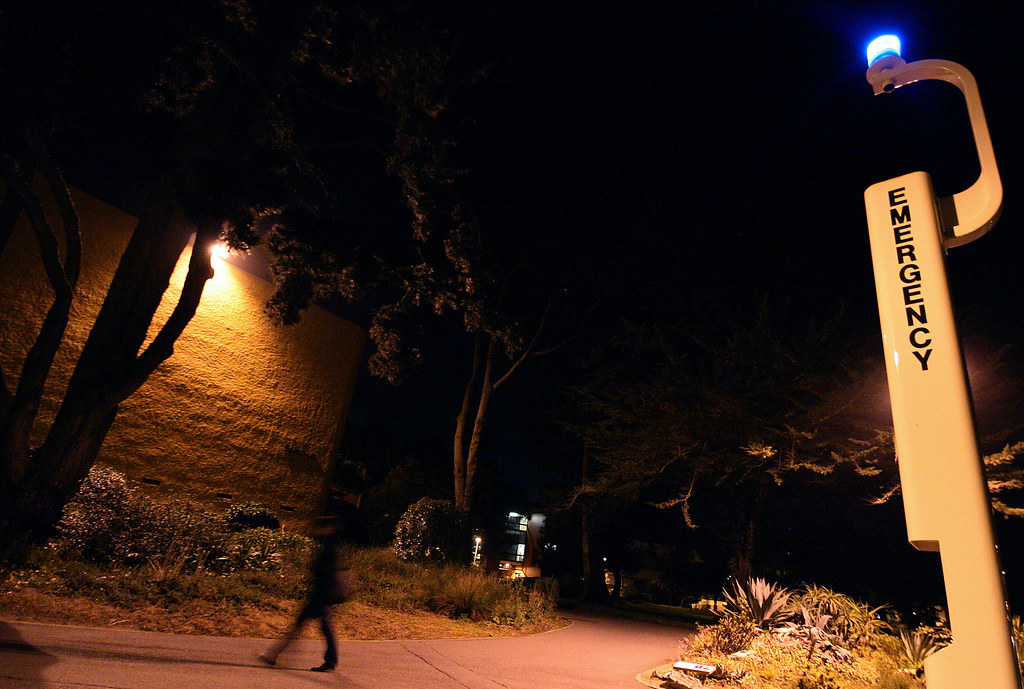
After a late night study session on campus, philosophy major Elizabeth Mathiasen was walking home around midnight when she noticed she was not alone.
“I walked faster and even took a different route home and he was still half a block behind me,” she said.
Perpetrators such as this, look for opportunities in darker areas, people walking alone and unaware of their surroundings.
SF State and the surrounding community have seen a recent spike in strong-arm robberies and property crime over the last three months, according to San Francisco Police Department’s CrimeMaps.
According to CrimeMaps, nearly 60 percent of robberies in the last three months were reported as strong-arm robberies, a robbery by force without the use of weapons. Prime spots include the student center, library and dormitories. Other recent spikes in crime include vehicle break-ins, residential burglaries and stolen vehicles, according to SFPD officials.
Common items reported stolen are bicycles, laptops, cell phones, MP3 players, wallets and backpacks, according to SF State’s University Police Department website.
“Both (University Police and SFPD) have seen an increase in the theft of personal property and robberies in the district,” University Police Chief Pat Wasley said. “More often than not, it’s cell phones and personal electronic devices that are targeted by thieves.”
As for the cause of the uptick in crime around campus, officials did not have a clear explanation.
“There has been a recent spike in crime,” UPD Deputy Chief Reggie Parson said. “There’s no explanation as to why we’ve seen an increase,”
Although SFPD and University Police officials could not explain the spike in crime, the UPD has increased staff levels during times most affected by criminal activity, according to Wasley, though some students have not seen any changes in police presence.
“I don’t think surveillance of this area has increased,” Mathiasen said. “I tried to wave down an officer at 19th Avenue and Holloway when I was being followed but he didn’t respond, so it did not make me feel any safer.”
There are some students who still feel safe when traveling late at night despite the warnings.
“I’ve seen signs around University Park North about strong-arm robberies occurring,” junior Matthew Reyes, 27, said. “Although it seems like it’s a nice neighborhood, I may still walk around late at night and feel okay.”
Another common crime that has increased are vehicle break-ins. Jim Dudley, criminal justice lecturer at SF State and former SFPD Deputy Chief, was a victim of vehicle break-ins himself.
“My car was boosted a few years ago, but all the suspect got was a messenger bag with sweaty old gym clothes,” Dudley said. “Despite repeated warnings, people leave valuables visible in their cars. Nothing should be visible inside including change, charging cradles or cords for phones or dash mounted GPS devices.”
To help reduce crimes and increase personal safety awareness, SF State offers a program known as Campus Alliance for a Risk-free Environment. C.A.R.E. is a student security team employed, trained and supervised by the University Police Department.
“C.A.R.E escorts’ primary responsibility is to provide personal escorts during evening and night time hours,” Wasley said. “UPD officers are available when the C.A.R.E escorts are off duty.”
UPD and SFPD are available when escorts services aren’t and are thoroughly trained to protect the campus community from dangerous situations.
“UPD officers are trained in response to violent attacks as well as situations that pose a threat to the campus community,” Parson said.
To prevent further theft, Dudley advises everyone to keep their belongings in sight and to keep their heads up.
“Don’t work on iPhones, iPads or laptops while walking or taking public transit,” Dudley said. “Crooks are looking for earbuds and unaware victims rocking out and walking with heads lowered.”




